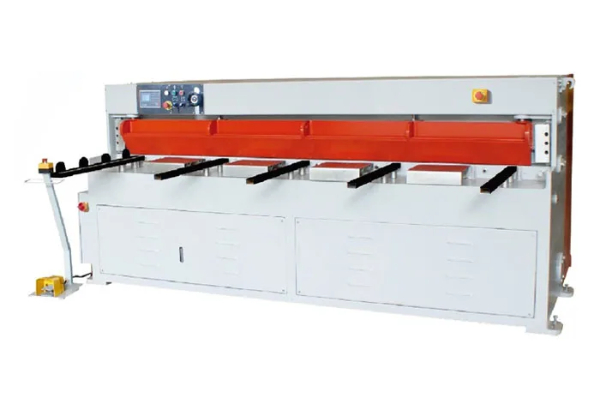
Understanding the Physics Behind Metal Plate Bending Machines
- By:Metmac
- 2024-08-06
- 177
The bending of metal plates using plate bending machines involves a complex interplay of forces and material properties. Understanding the physics behind these machines allows for efficient and accurate bending operations. This article provides a comprehensive overview of the principles governing metal plate bending.
Material Properties
The properties of the metal being bent significantly influence the bending process. Factors such as yield strength, tensile strength, and ductility determine the amount of force required for bending and the material’s susceptibility to cracking or deformation.
Force and Bending Moment
Bending a metal plate involves applying a force that creates a bending moment. The bending moment is directly proportional to the force applied and the distance from the neutral axis, which is the axis of zero bending stress within the plate.
Plastic Deformation
When the bending moment exceeds the yield strength of the metal, plastic deformation occurs. The inner fibers of the plate stretch, while the outer fibers compress. This deformation allows the plate to conform to the desired curvature.
Elastic Recovery
After bending, the material exhibits elastic recovery, which is the tendency to return to its original shape. However, if the bending moment exceeds the elastic limit, permanent deformation occurs.
Bending Radius
The bending radius refers to the radius of curvature of the bent plate. Smaller bending radii require higher bending forces and result in increased plastic deformation. The minimum bending radius is limited by the material’s ductility and the risk of cracking.
Process Parameters
Various process parameters affect the bending results. These include the force applied, bending speed, die shape, and lubrication. Optimizing these parameters ensures efficient bending and minimizes material damage.
Applications
Metal plate bending machines are widely used in various industries, including automotive, shipbuilding, construction, and aerospace. They produce components such as beams, frames, panels, and enclosures.
In conclusion, understanding the physics behind metal plate bending machines is crucial for maximizing their efficiency and accuracy. By considering the material properties, force and bending moment, plastic deformation, elastic recovery, bending radius, and process parameters, operators can achieve precise and reliable bending operations.
-
Advanced Sheet Metal Rolling, Cutting, and Folding Machines for Efficient Fabrication
2025/10/22 -
High-Precision Sheet Metal Bending and Cutting Solutions for Modern Manufacturing
2025/10/22 -
High-Precision Solutions from Leading Sheet Metal Cutting Machine Manufacturers
2025/09/11 -
Reliable Sheet Metal Equipment for Sale to Support Precision Fabrication
2025/07/17
-
Advanced Sheet Metal Rolling, Laser Cutting, and Folding Machines for Precision Fabrication
2025/10/31 -
High-Performance Sheet Metal Bending and Cutting Machines for Modern Fabrication
2025/10/31 -
High-Quality Sheet Metal Equipment for Sale: Efficient Solutions for Modern Manufacturing
2025/10/31 -
High-Performance Sheet Metal Equipment for Sale: Forming and Shearing Solutions for Modern Fabrication
2025/10/22
-
A Guide to the Latest Innovations in Sheet Metal Folding Machines
2024/11/29 -
Key Features to Consider When Investing in a Sheet Metal Folding Machine
2024/11/28 -
Enhancing Precision with Advanced Sheet Metal Folding Machines
2024/11/27 -
How to Choose the Right Sheet Metal Folding Machine for Your Workshop
2024/11/26






